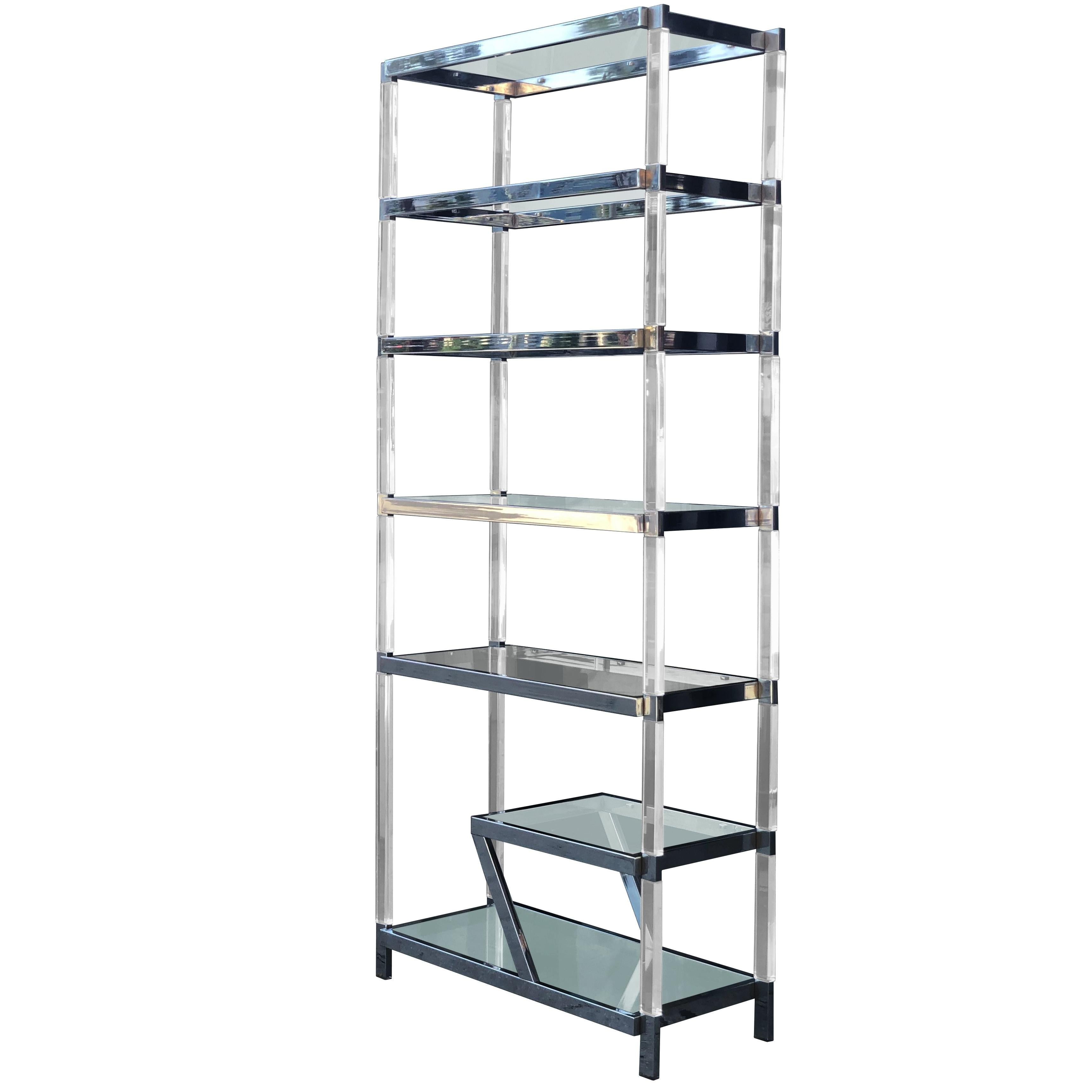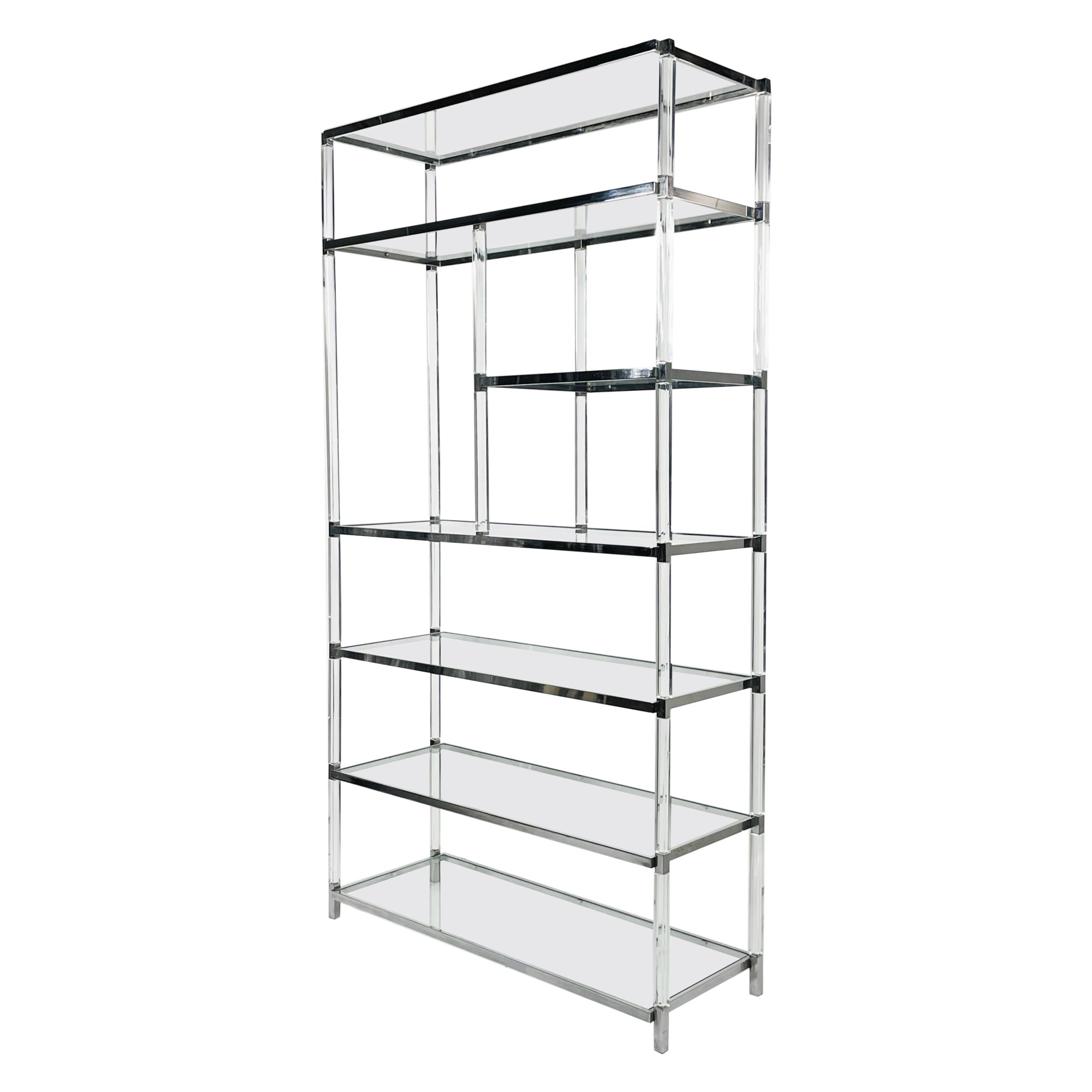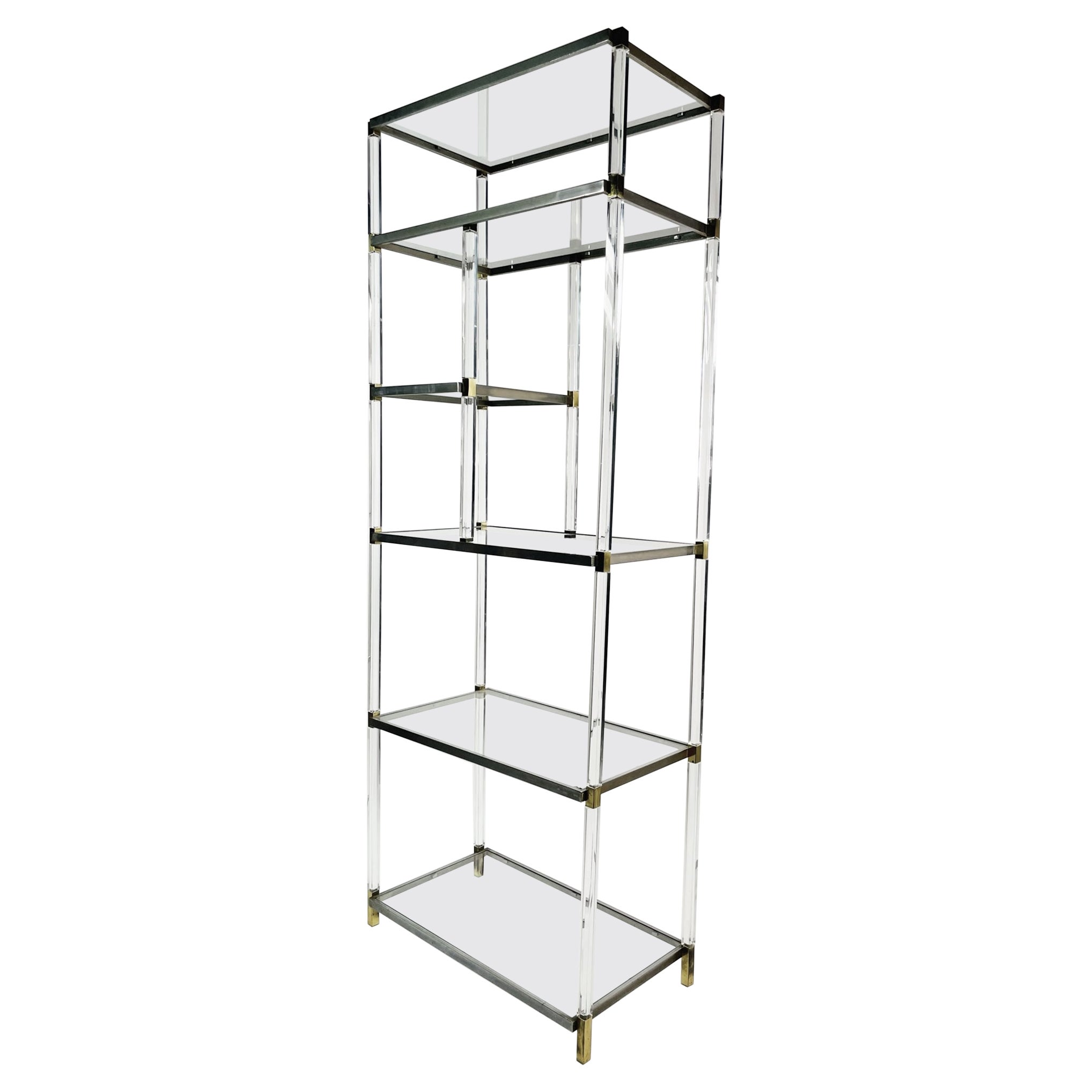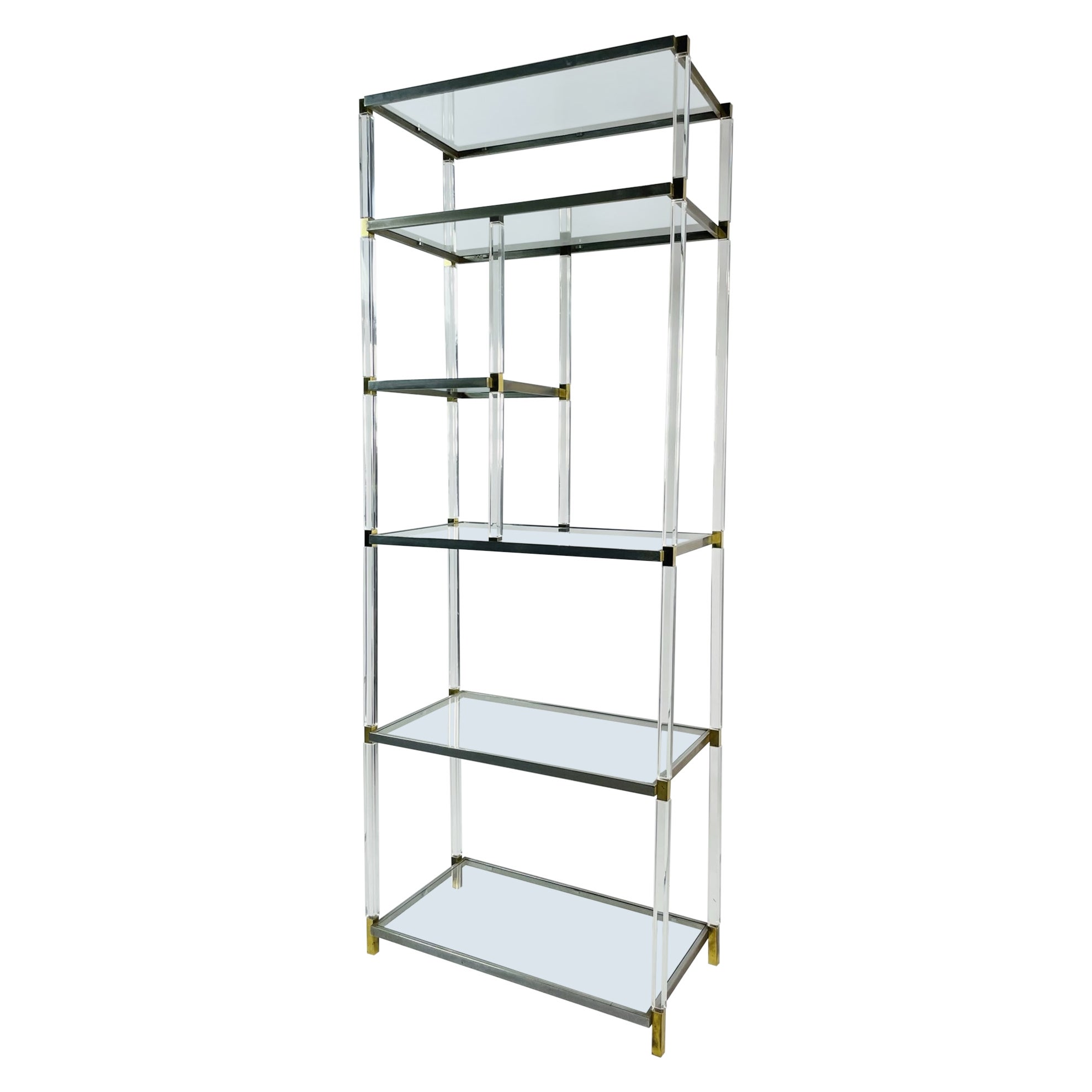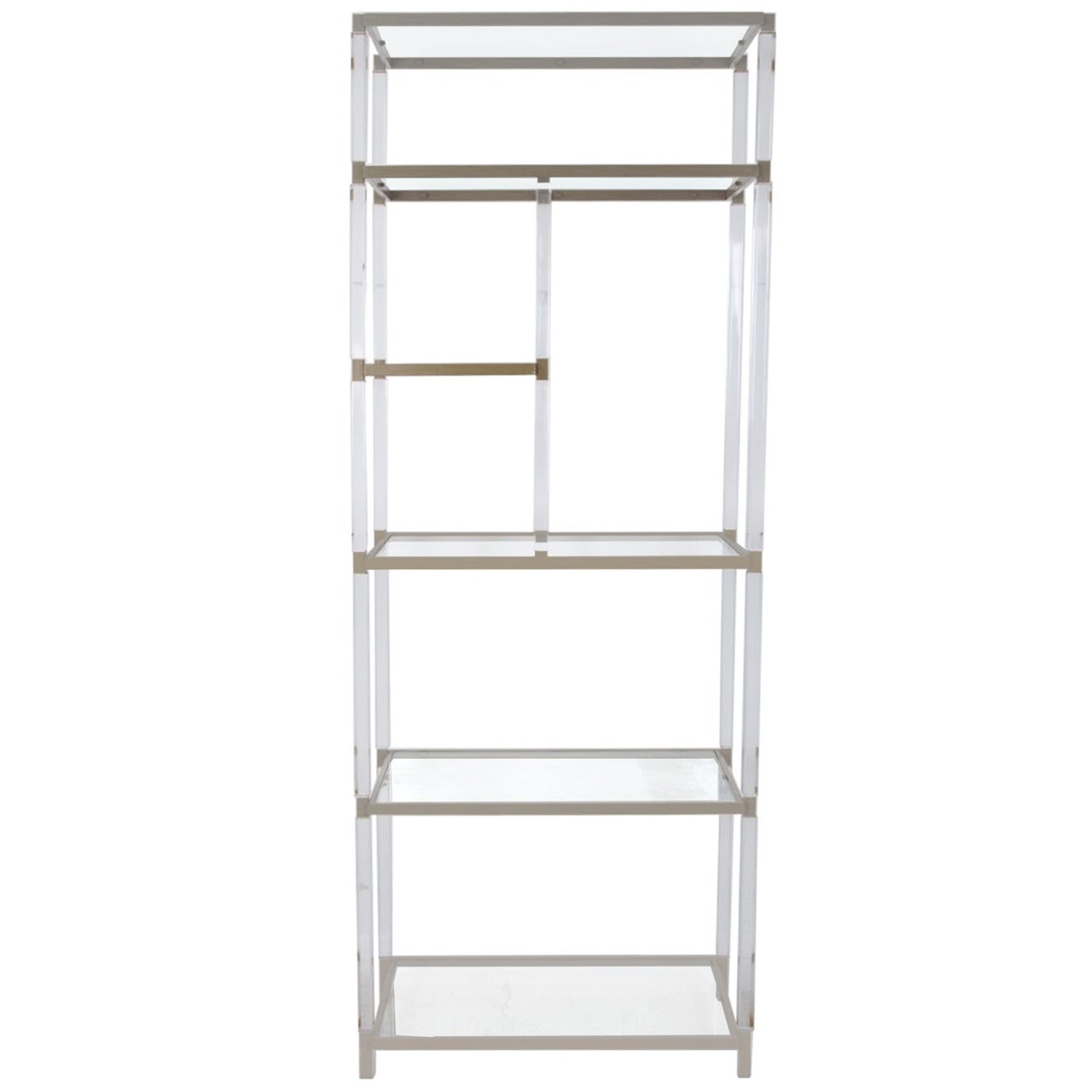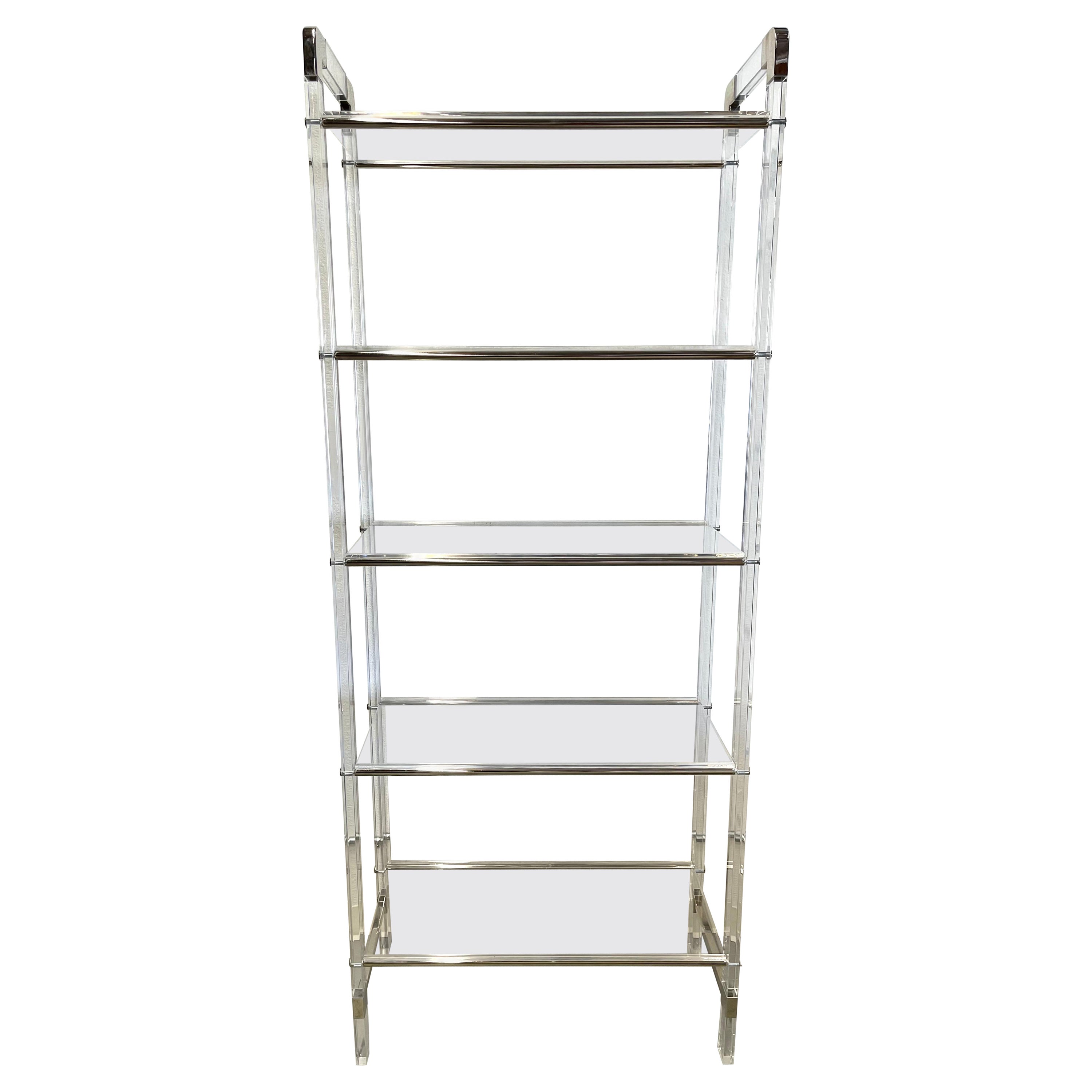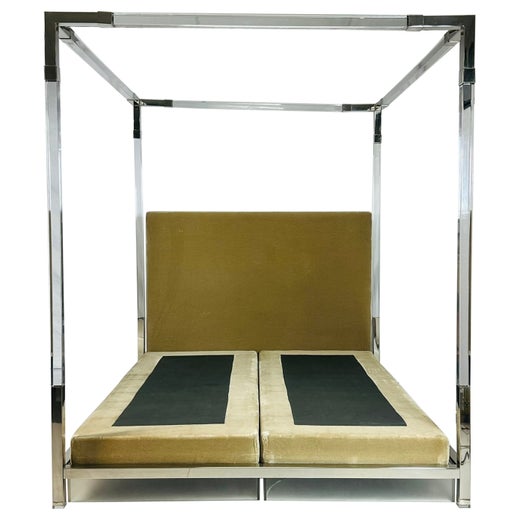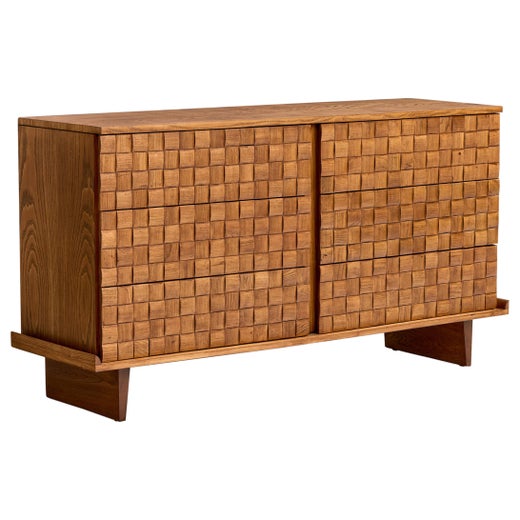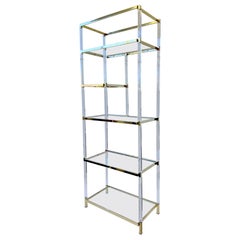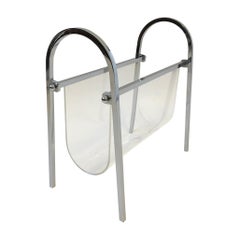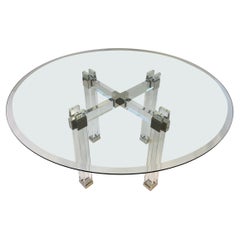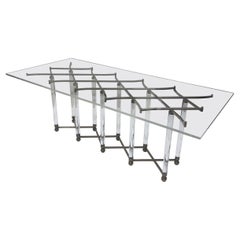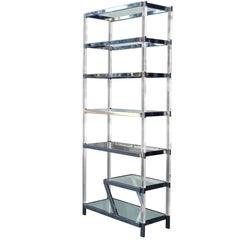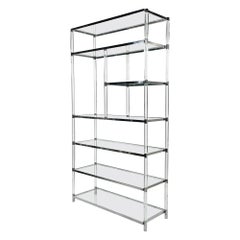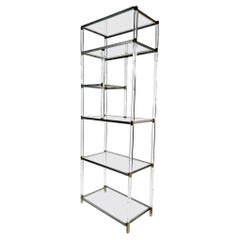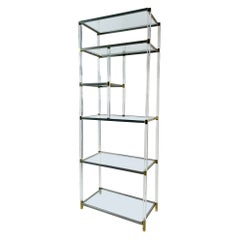Signed Lucite and Chrome Étagère by Charles Hollis Jones
About the Item
- Creator:Charles Hollis Jones (Designer),Paul Laszlo (Designer)
- Dimensions:Height: 81.25 in (206.38 cm)Width: 34 in (86.36 cm)Depth: 16 in (40.64 cm)
- Style:Modern (Of the Period)
- Materials and Techniques:
- Place of Origin:
- Period:
- Date of Manufacture:1973
- Condition:Wear consistent with age and use.
- Seller Location:Palm Springs, CA
- Reference Number:1stDibs: LU938015893702
Charles Hollis Jones
The now omnipresent design use of acrylic and Lucite owes much of its enduring popularity to seasoned creative Charles Hollis Jones. Nicknamed “Mr. Lucite,” the California-based furniture designer and artist made his reputation — and contributed to a lasting legacy for a material one might not immediately consider highbrow — with chairs, tables and other furnishings in the substance scientifically known as polymethyl methacrylate. But while the connecting thread through Jones’s body of work is the presence of translucent materials, his designs are anything but one-note.
The son of an Indiana carpenter, Jones has always been fascinated with structure and reinventing expected ones in new ways. He began working with furniture manufacturers while still a teenager and came to prominence in the 1960s and ’70s, researching and experimenting with techniques to shape acrylic into unconventional forms. “If I design a T-A-B-L-E without thinking of the name, then I can pretend I’ve never seen one,” he told PIN-UP magazine. His design combinations run the gamut from Lucite, brass and glass on elegant dining tables to more unusual applications of Lucite as legs for upholstered sofas and frames for Tibetan fur chairs.
Jones’s work is as varied as his client list, which has included Frank Sinatra, Sylvester Stallone and the Kardashians. For Tennessee Williams, he created a writing chair called the Wisteria chair. Jones also collaborated several times with modernist architect John Lautner, designing furniture that seemed to disappear into its surroundings.
He resides in Los Angeles, where he still designs today.
Find a range of new and vintage Charles Hollis Jones furniture on 1stdibs.
Paul Laszlo
The suave architect and interior designer Paul Laszlo made his reputation in Hollywood, where his clients included Barbara Stanwyck, Cary Grant and Elizabeth Taylor. He was aligned to no artistic or design movements, relying on his own carefully honed instincts to create his celebrated lounge chairs, tables, dressers and other furnishings. From the late 1930s to the 1960s, Laszlo’s name was a byword for sumptuous modernity among members of the smart set.
Born in Hungary in 1900, Laszlo learned about quality from his father, a prosperous furniture manufacturer. He studied design in Vienna and had his technical training in Stuttgart, Germany, where, at age 27, he established an upscale design business that gained an international reputation. Nine years later, with the Nazis in power, Laszlo, a Jew, left Germany for the United States and made his way to Los Angeles. There, he established an interior design office in Beverly Hills and was pleased to find that his Stuttgart credentials carried weight.
While he took many commercial assignments for American department stores, custom residential work was Laszlo’s stock in trade. He turned his hand to every element in a room, “down to the last ashtray,” Time magazine once wrote. Like his clients, Laszlo appreciated luxury — not the luxury of rare and precious materials, but the luxury of rich colors and textures, and deep comforts. He had a contemporary élan, exemplified by spaces that were bright, airy, uncluttered and up-to-date.
The classic earmarks of Laszlo’s furnishings are generous proportions and, in the case of his Paddle and Plank armchairs, namesake armrests that are flat and wide, the perfect spot to rest a cocktail. His case goods, tables and dining chairs have clean, elegant lines; they are simply formed yet warm, with interesting details such as woven veneer door fronts.
In recent years, Laszlo’s designs have found a new audience among fans of his easygoing modernism. Prices are in the neighborhood of $5,000 for his vintage cabinets, and from $8,000 to upwards of $20,000 for seating pieces, which are generally found in pairs or groups of six or more.
There was a reason that Laszlo’s work was so admired in the mid-20th century: every design contributes to an environment that is comfortable and elegant — at once robust and relaxed.
Find vintage Paul Laszlo furniture on 1stDibs.
- ShippingRetrieving quote...Shipping from: Palm Springs, CA
- Return Policy
More From This Seller
View AllVintage 1970s American Modern Bookcases
Brass
Vintage 1970s American Modern Magazine Racks and Stands
Nickel
Vintage 1970s American Modern Dining Room Tables
Chrome
Vintage 1970s American Modern Dining Room Tables
Nickel
Vintage 1960s American Mid-Century Modern Side Tables
Chrome
Vintage 1960s American Modern Coffee and Cocktail Tables
Chrome
You May Also Like
Vintage 1960s American Mid-Century Modern Shelves
Chrome
Vintage 1960s American Mid-Century Modern Cabinets
Nickel
Vintage 1960s American Mid-Century Modern Cabinets
Nickel, Brass
Vintage 1960s American Mid-Century Modern Cabinets
Nickel
Vintage 1960s American Mid-Century Modern Cabinets
Nickel
21st Century and Contemporary American Shelves
Nickel
